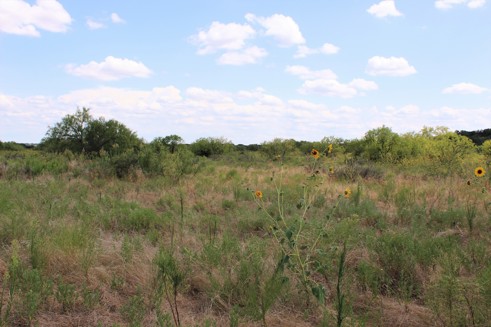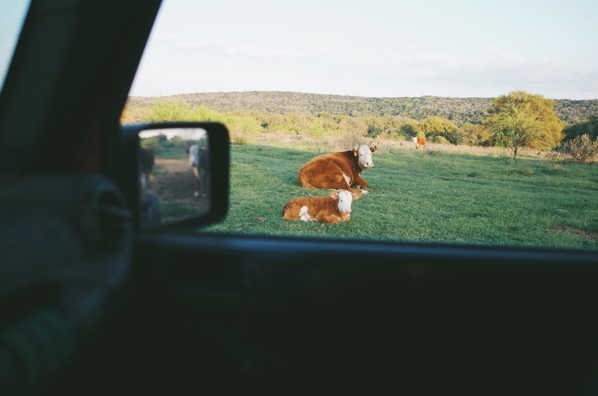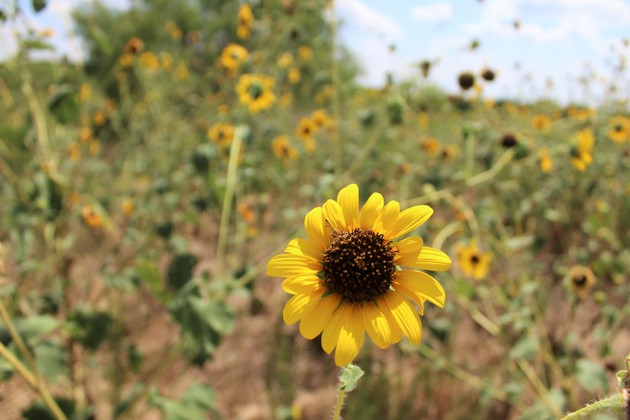

Resources for New Landowners: Aldo Leopold's Five Tools of Wildlife Management
May 4, 2020
Aldo Leopold - author, philosopher, conservationist, and so-called “Father of Wildlife Ecology” - is a pillar of the modern-day wildlife conservation and management movement. His revolutionary musings on the value of land and wildlife and his intentional management techniques often appear in the discourse on wildlife management.
In Game Management, Leopold wrote, “Are we too poor in purse or spirit to apply some of it to keep the land pleasant to see, and good to live in?” This conveys a simple truth for both green and veteran landowners: land management may require hard work, but generates value for the land and our spirits. The most effective land management is that which is intentional.
Perhaps one of Leopold’s most lauded quotes also originated from this work - “The central thesis of game management is this: game can be restored by the creative use of the same tools which have heretofore destroyed it -- axe, plow, cow, fire, and gun.” This does not mean that increasing hunting rates and raising more cattle will improve wildlife populations - the keyword to focus on is creative use of these tools. Through considerate hunting regulation, brush management, and prescribed fires, managing game species becomes a little easier. Although Leopold refers specifically to game management, these tools can be used for and benefit a multitude of wildlife species. Although much of NRI’s work with wildlife focuses on specific species like quail, these can act as indicator species for many other wildlife species which utilize similar habitat components.

Aldo Leopold wrote, “Are we too poor in purse or spirit to apply some of it to keep the land pleasant to see, and good to live in?” Photo by Abigail Holmes.
Axe
The axe tool refers to effective brush management. As almost any Texas landowner who has dealt with mesquite trees will testify - this is not always a simple task. Sculpting the land with brush management requires intentional planning and a watchful eye. If a woody plant is removed in error, it can take years to regrow those key habitat structures. Conversely, if woody plants overtake a tract of land they can become costly to remove. The following resources were developed with the wildlife-conscious landowner in mind, to provide information about the importance of brush has a habitat component and the best ways to manage it.
- Program: Brush Busters
- Blog: Brush Control for Small Acreages - description
- The Importance of Brush as a Thermal Refuge:
- Blog: Quail Coping with the Cold
- Blog: How Quail Handle the Heat
- YouTube Video: Quail Houses
- YouTube Video: Half-Cutting Mesquites to Enhance Quail Coverts
- Extension Publication: Woody Plants for Wildlife: Brush Sculpting in South Texas and the Edwards Plateau

The axe tool includes modern machinery, such as excavators, that can accomplish many brush management tasks efficiently. Photo by Abigail Holmes.
Plow
The plow is not always considered as a tool for wildlife management but can be an effective method of creating supplemental food plots and even shelter for a variety of wildlife species. The following resources focus on primarily on creating wildlife food plots, but it is also important to not overwork the land or harm native biodiversity in pursuit of agricultural abundance.
- YouTube Playlist: Wildlife Food Plots
- YouTube Video: Shredding/Mowing for Wildlife Management
- YouTube Video: Disking for Wildlife Management
- YouTube Video: White-tailed Deer Food Plots on Livestock Ranches
- YouTube Video: White-tailed Deer Food Plots: Soil Considerations
- YouTube Video: Disking for Quail Habitat in the Rolling Plains of Texas
Cow
Raising cattle on a tract of land may seem antithetical to the ideals of wildlife management, but maintaining proper stocking rates and enforcing rotational grazing can allow room for both of these ideals on one property. Preventing overgrazing allows native species to remain a healthy resource to utilize as food and habitat cover.
- Blog: Cattle as a Tool for Quail Management
- YouTube Video: Determining Stocking Rate to Benefit Cattle and Quail (Part 1 of 3)
- YouTube Video: Determining Stocking Rate to Benefit Cattle and Quail (Part 2 of 3)
- YouTube Video: Determining Stocking Rate to Benefit Cattle and Quail (Part 3 of 3)
- YouTube Video: Proper Grazing of Quail Nesting Habitat
- YouTube Video: Grazing Management for Quail
- YouTube Video: Grazing as a Tool for Wildlife Management:
- Extension Publication: Using Livestock to Manage Wildlife Habitat

Maintaining proper stocking and grazing rates is one key pillar of wildlife management. Photo by Brittany Wegner.
Fire
Fire is a natural tool for clearing land and creating a mosaic of different successional stages. Prescribed fires are closely monitored, planned events targeted at specific areas of a property to manage brush and forb growth. Safety is key when planning and executing prescribed fires, and it is important to contact the proper experts prior to any prescribed burn.
- Texas Prescribed Fire Associations
- Extension Publication: Fire as a Tool for Managing Wildlife Habitat
- YouTube Video: Wildfires and Quail

An annual sunflower (Helianthus annuus). Photo by Abigail Holmes.
Gun
The gun tool, referring to hunting, is likely the most popular of these tools among Texans. Hunting can be used to limit the overpopulation of prolific species, reduce the impacts of specific predators in a local area, provide information on species abundance and sex ratios, and more. It is an excellent tool for conservation as well as recreation. Abiding by state hunting laws and regulations prevents overharvest of sensitive species and allows hunters to continue the practice sustainably.
- TPWD: Hunting Regulations
- TPWD: Hunting Licenses, Stamps, & Permits
- USFWS: Hunting Resources
- Blog: Economic Value of Hunting
- YouTube Video: Shooting Techniques for Wild Pigs
These five tools still form the basis for effective and sustainable game and wildlife management, even so many decades after Leopold’s death. Through the creative use of the axe, cow, plow, fire, and gun, private land stewards can restore game species and, by extension, many other wildlife species, while increasing the productivity of their land. In A Sand County Almanac, Leopold wrote, “Like winds and sunsets, wild things were taken for granted until progress began to do away with them. Now we face the question whether a still higher ‘standard of living’ is worth its cost in things natural, wild and free.” Today, Leopold might argue that a higher standard of living is created by nurturing all things natural, wild, and free, rather than overconsumption of these resources. Private land stewardship to benefit game and wildlife species creates healthier lands for habitat and human consumption.
Learn More
Private Land Stewardship Academies
Training land stewardship professionals working with private landowners and educating a community of practice on the importance of science-based conservation. Click Learn More for free access to resources.






